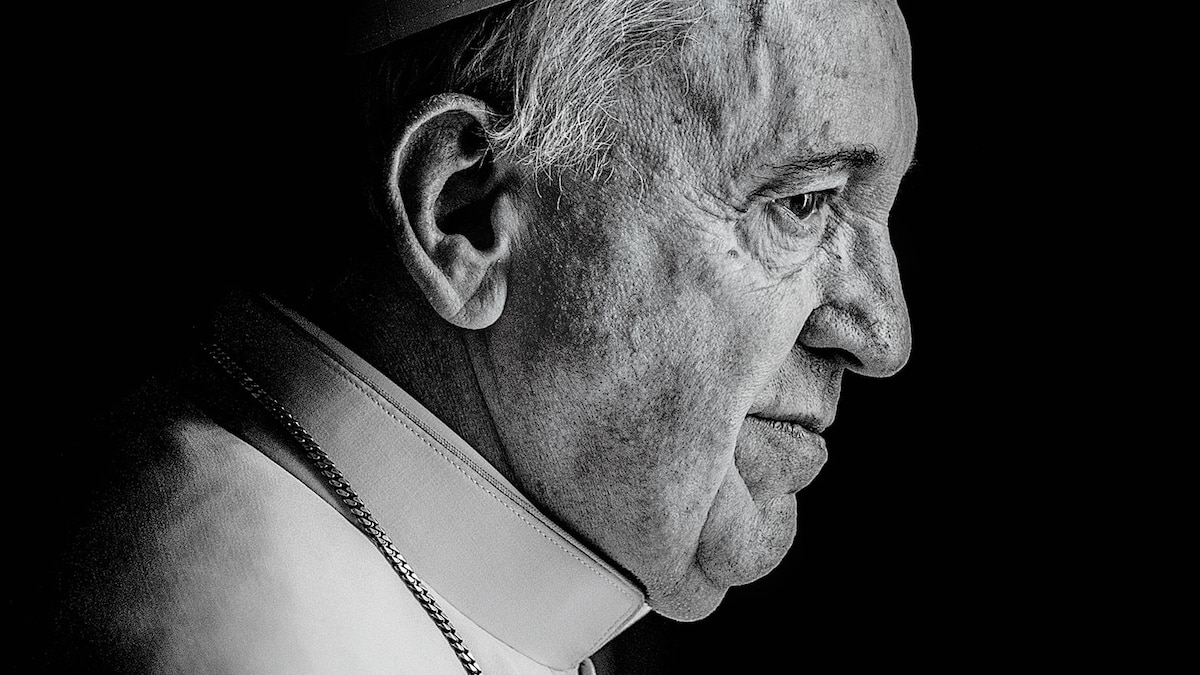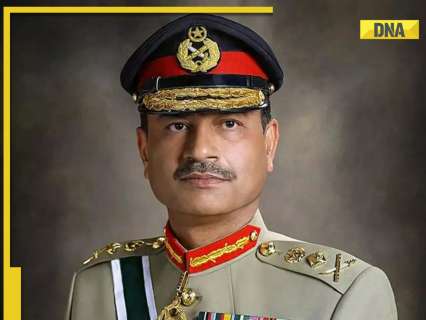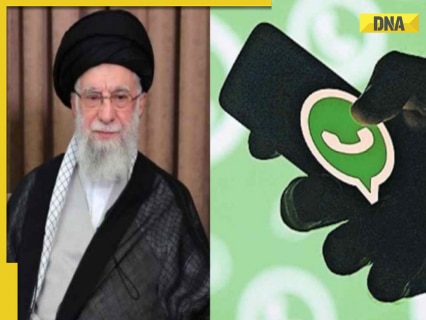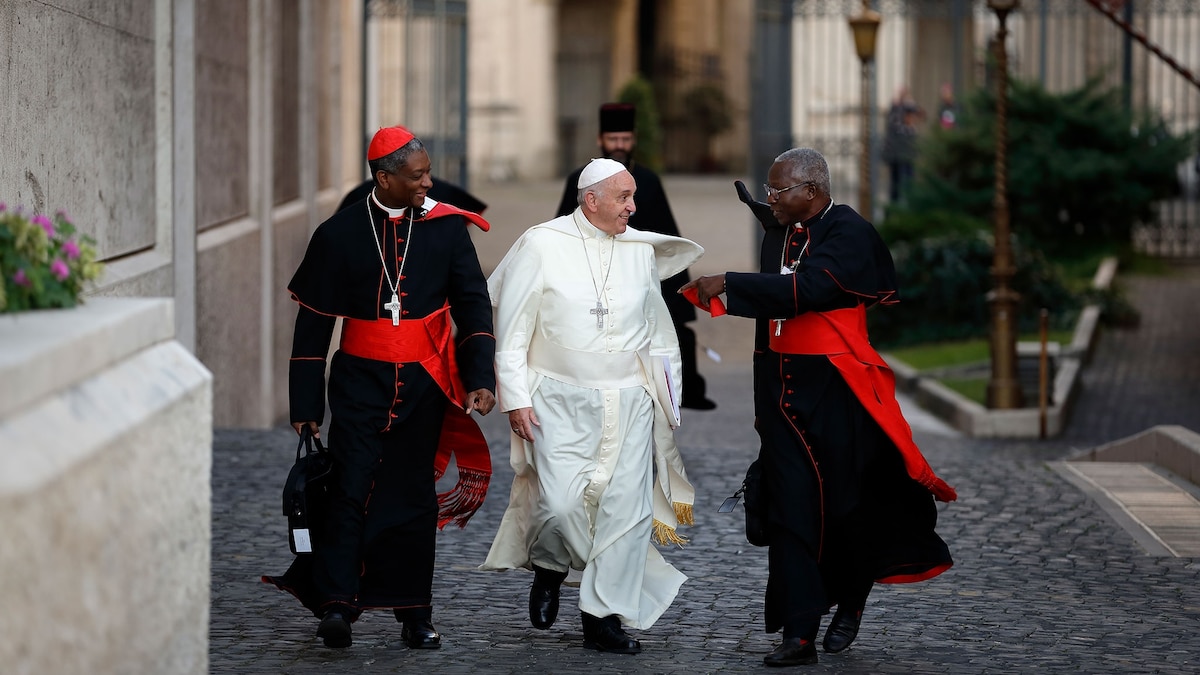Now Reading: Pope Francis, a pope for the people, dies at xx
-
01
Pope Francis, a pope for the people, dies at xx
Pope Francis, a pope for the people, dies at xx

Pope Francis passed away at the Vatican on April 21, after leading the Catholic faithful since March 2013. His election as pope was characterized by firsts: He was the first man from outside of Europe to become pope in more than 1,200 years, the first supreme pontiff from South America, and the first member of the Jesuits to preside as bishop of Rome.
As head of the Holy See, Francis broke much new ground, and his leadership represented a significant shift in the office itself, focusing on bridging the widening gap between the elite administration of the Catholic Church and its flock. He also pioneered new approaches to long-held Catholic traditions and practices.
(Take a close look at Pope Francis’s first visit to the United States.)

Seen fourth from the left in the third row, young Jorge Bergoglio attended primary school in Buenos Aires.
Photograph by Franco Origlia, Getty Images
Pope Francis’ path to priesthood
Francis’s upbringing, training, and practical experience set the foundation for his path through the church hierarchy. Born Jorge Mario Bergoglio on December 17, 1936, in Buenos Aires, Argentina, the future pontiff was a trained chemical technician. When a young man, he became afflicted with a life-threatening pulmonary illness that led to a partial lung removal. But it was after Bergoglio went to confession as a high school student that he received a call to serve God.

Jorge Mario Bergoglio as a young priest
Photograph by API, Contributor, Getty Images
Formally ordained as a Catholic priest in 1969, Bergoglio studied theology in his native Argentina before undertaking spiritual training in Spain.
Once back in Argentina he made his final vow to the Jesuit order on April 22, 1973, and became the provincial superior of the Society of Jesus soon after. During the 1980s and 1990s Bergoglio served as rector of his alma mater, Facultades de Filosofía y Teología de San Miguel, traveled abroad to continue his own education, and held numerous positions within the institutional church. In 1998 he became archbishop of Buenos Aires, and he was appointed cardinal by Pope John Paul II in 2001.

This is the austere bedroom where Pope Francis lived while studying for the priesthood in San Miguel, Buenos Aires, Argentina.
Photograph by Grupo44, LatinContent WO, Getty Images

Fond of Johann Georg Schmidtner’s “Mary, Untier of Knots,” Francis commissioned a replica. It has hung in the Buenos Aires’ Church of San José del Talar in since 1996.
Photograph by Grupo44, LatinContent WO, Getty Images
A proponent of solidarity
Throughout his career Bergoglio emphasized social justice, community engagement, and solidarity among Christians and non-Christians alike. He rejected anything resembling extravagance—for instance, opting for public transportation and modest living arrangements, instead of the more elaborate apartments inhabited by his predecessors. His tireless work in the poorest neighborhoods of Buenos Aires even earned him the moniker “slum bishop.”
In 2001 Bergoglio was launched into the global spotlight after the Synod of Bishops when he stepped in to serve as relator general. In that position, Bergoglio was tasked with delivering the keynote address and overseeing the texts written on the outcome of the gathering, which often serves as a guide for matters of the church. Bergoglio demonstrated skill and grace at the proceedings after the attacks of September 11—so much so that it ultimately led to talk of his elevation to the papacy after the death of Pope John Paul II in 2005. But it wasn’t until eight years later, when Pope Benedict XVI resigned, that on March 13, 2013, the College of Cardinals elected Bergoglio as the 266th pope of the Roman Catholic Church.
Bergoglio entered the papal seat at the age of 76, choosing Francis as his pontifical name, in honor of St. Francis of Assisi. Bergoglio later explained that as the votes of the conclave were counted, his mind turned to the 13th-century saint: “For me, he is the man of poverty, the man of peace, the man who loves and protects creation.”
You May Also Like
Pope Francis’s missives, communiqués, and official decrees demonstrated his desire to modernize the church and overhaul a Vatican scarred by scandal. His four encyclicals (letters regarding church teachings addressed to all bishops) outlined his focuses on faith and salvation, the relationship between the environment and religion, the need for cooperation among all humans worldwide, and a call for rediscovering the importance of the heart. Francis soon became a “rock star” to many, followed by millions online and greeted at events by hundreds of thousands of the faithful, bunched in tightly packed crowds and eager for selfies.
(Read Pope Francis’s first-ever papal encyclical on the environment.)
Pictures of Pope Francis’s inspiring life
Born Jorge Mario Bergoglio, Pope Francis was elected on March 13, 2013, to replace Benedict XVI as leader of the world’s 1.2 billon Catholics. Along his path to the papacy, he served as Argentina’s cardinal—seen here at the time greeting parishioners during the celebration of Saint Cajetan in Buenos Aires.
Photograph by Claudia Conteris, AFP, Getty Images
An emphasis on respect
Within the Vatican itself Pope Francis worked to diversify the College of Cardinals in an effort to move away from a body composed primarily of Europeans. However, Francis was immune to neither controversy nor criticism, notably being thrust into the ongoing sex abuse scandal in the church. He garnered headlines of both praise and divisiveness for his comments on homosexuality and same-sex unions and the practice of surrogacy, his role in elevating women within the church, and his less rigid stance on divorce and contraception, among other topics.
Throughout his papacy Pope Francis emphasized respect for the laity and sought to empower ordinary people everywhere by simplifying the messaging of the church. He endeavored to bring compassion and reconciliation to the forefront of the church’s priorities, and believed in open discussion to foster spiritual and clerical thought. Francis will be remembered for not only reshaping the institution as a whole but also for his unwavering dedication to Catholic faith and community and his unprecedented look to the future in an ever changing world.























